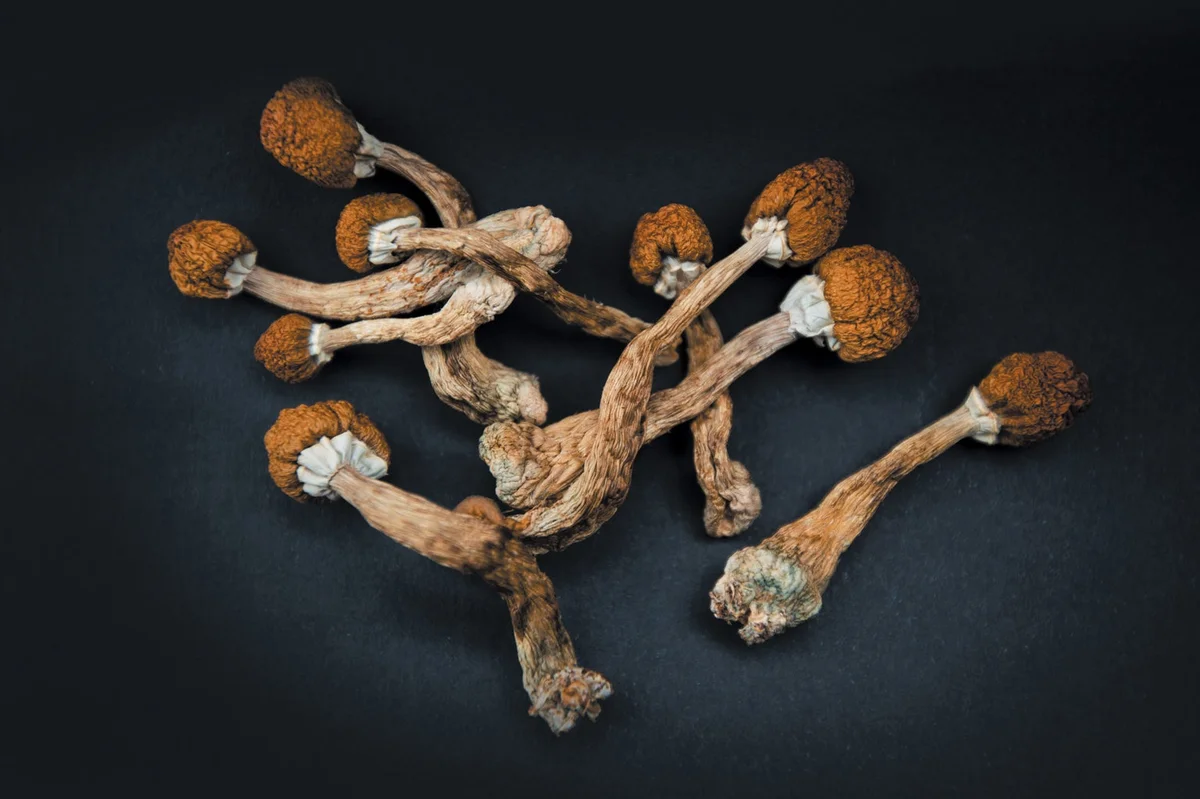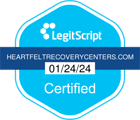Wondering how long do mushrooms last? Usually, the effects start within 30 to 60 minutes, peak at 2 to 3 hours, and last between 4 to 6 hours. This article will detail these stages and the factors influencing them.
Key Takeaways
-
Magic mushroom effects typically onset within 20 to 40 minutes and peak around 2 to 3 hours, with the overall experience lasting 4 to 6 hours.
-
Factors influencing the duration and intensity of effects include dosage, potency, method of consumption, and individual metabolism.
-
Recent research highlights the therapeutic potential of psilocybin in treating mental health conditions such as depression and PTSD.
Table of Contents
Onset and Duration of Shroom Effects
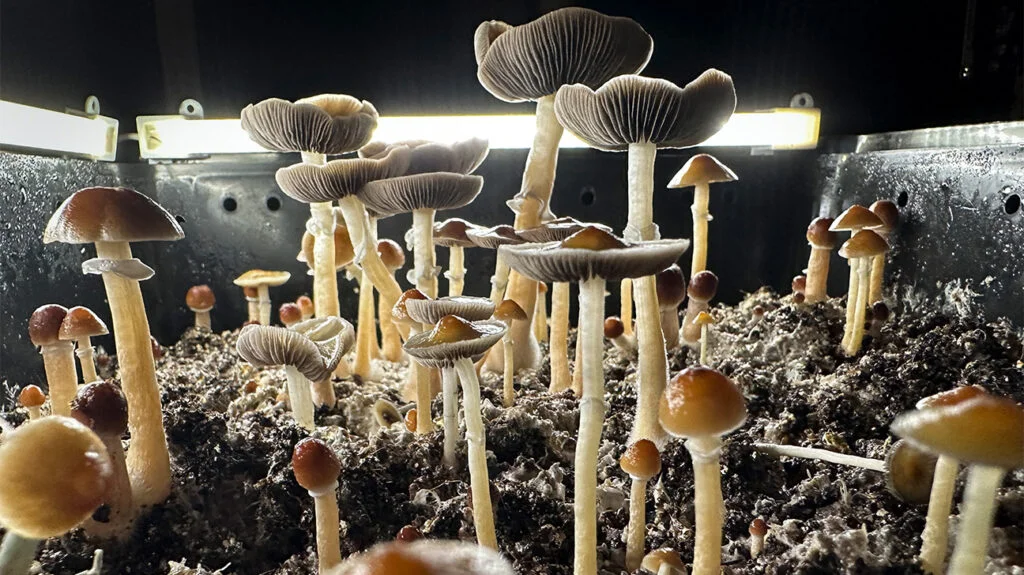
After ingesting magic mushrooms, the effects begin to manifest within a period of 30 to 60 minutes. The onset time may differ due to various elements like the mode in which they are taken, the quantity consumed, and personal metabolic rates.
During their journey with these mushrooms, individuals go through several distinct phases that each possess their own specific features and levels of intensity.
Initial Onset Time
Typically, the effects of magic mushrooms begin to manifest between 20 and 40 minutes after ingestion. This timeframe can differ depending on several conditions, including if they are taken on an empty stomach or ingested in certain forms such as tea – which may accelerate the onset to within 10 to 20 minutes. Taking mushrooms while fasting might similarly speed up their impact.
Acknowledging these factors is essential for individuals looking forward to a psychedelic trip with magic mushrooms. It allows them to better mentally and physically gear themselves up for what’s coming, setting appropriate expectations and promoting a more seamless entry into the altered state of consciousness that awaits.
Peak Experience
Typically, the most intense and vivid psychedelic effects of mushrooms manifest between 2 to 3 hours after they have been consumed. During this peak phase, individuals may experience significant visual and auditory hallucinations, coupled with an overwhelming sense of euphoria or a profound loss of self-identity.
Understanding the timing of these peak effects is crucial for users as it allows them to anticipate the level of intensity and ensures that they are situated in an environment that is secure and conducive to their comfort.
Overall Duration
Typically, a shroom trip endures from 4 to 6 hours. Depending on the size of the dose and variations in personal metabolism rates, this experience can last for as long as eight hours. The intensity of the effects slowly diminishes after reaching its peak, easing into a smooth decline.
Following the conclusion of their journey with psychedelics lasting up to several days afterward, users might detect an extended afterglow that brings about feelings of contentment and sharpened cognitive acuity.
Factors Influencing Shroom Duration
Several factors influence how long mushrooms last in an individual’s system and the overall experience. These include dosage, potency, method of consumption, metabolism, body weight, and overall health.
Each of these factors can significantly affect the duration and intensity of mushroom effects, so considering them is important when planning a trip.
Dosage and Potency
The amount ingested plays a critical role in shaping both the intensity and duration of a shroom trip. Consuming larger quantities can prolong and amplify the experience, whereas taking lesser amounts usually leads to shorter durations with less profound effects. Comprehending this dynamic is key for individuals looking to customize their psychedelic journeys according to personal preference and resilience.
The strength of these hallucinogenic effects varies based on mushroom type as well as their form—fresh or dried. Distinct species such as Psilocybe cubensis or Liberty Caps contain different levels of active compounds like psilocybin. Thus, affecting potency accordingly. Typically, mushrooms in their dried state carry more concentrated properties when compared to fresh ones—making it essential for users to be informed about both mushroom variety and its preparation prior to consumption.
Method of Consumption
The manner in which magic mushrooms are consumed can significantly impact the rapidity and strength of their effects. Popular consumption methods include ingesting them uncooked, imbibing a tea infusion, or swallowing capsules containing them. For example, when taken as tea, magic mushroom effects typically commence within 5 to 10 minutes. Employing lime juice to soak ground dried mushrooms may Accelerate the emergence of their impacts.
In contrast, other forms like whole dried mushrooms or those that have been reduced to powder offer various ingestion options. These different forms influence how they metabolize through the body’s systems and vary in effectiveness accordingly. Comprehending these variances enables individuals to select a consumption method aligned with their preferred intensity and timing for experiencing the effects of magic mushrooms.
Individual Metabolism and Body Composition
The rate at which psilocybin is broken down and cleared from the system can be greatly influenced by individual characteristics, including metabolism speed, age, and levels of hydration. A greater body mass might mean a more gradual start to the psychedelic experience with less powerful peak sensations. The consumption of food prior to taking mushrooms has the potential to slow their onset and diminish their potency. Conversely, staying well-hydrated could assist in processing them.
The presence of other substances such as alcohol may compromise the body’s efficiency in metabolizing psilocybin, possibly modifying both its impact and how long it lasts. It’s crucial to take into account personal health considerations as well as lifestyle choices when intending to use mushrooms for an entheogenic journey.
How Long Do Shrooms Stay in Your System?
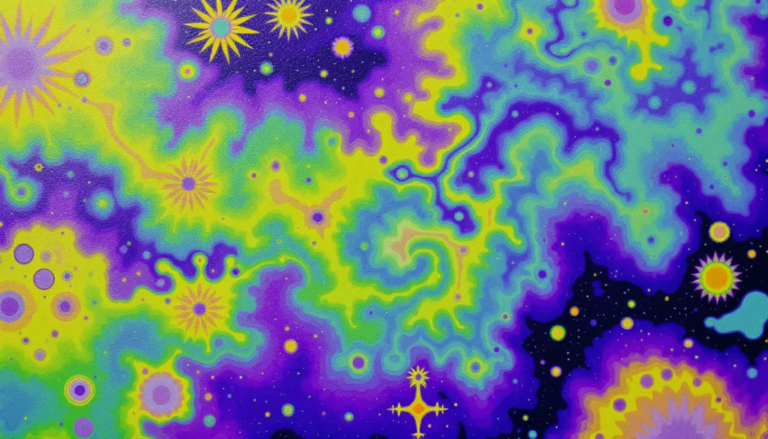
Knowing how long psilocybin mushrooms stay in your system is important for safety and compliance with drug testing policies. Psilocybin can be detected in urine, blood, and hair follicle tests. The detection window varies based on dosage, individual metabolism, and the type of test used.
Urine Tests
Typically, psilocybin becomes undetectable in standard urine tests within 24 hours of ingestion. In some instances, trace amounts might be found up to a week after consumption. Specialized tests designed to detect psilocybin are not commonly used due to their high cost and rarity, hence there is no practical method to haveten its elimination from the system.
Although maintaining good hydration may marginally speed up the clearance of psilocybin from the body, this effect is minimal. Psilocybin does not show up on conventional panel drug tests that are typically administered.
Blood and Saliva Tests
Psilocybin presence in blood or saliva can be identified by tests within a 24-hour window following ingestion. Nevertheless, psilocybin metabolizes at such a rapid rate that it is often not dependably traceable through these types of tests.
Hair Follicle Tests
Hair follicle testing can identify psilocybin consumption over a prolonged period, potentially as long as 90 days. Nevertheless, utilizing hair follicle tests to detect mushrooms is not common practice.
Shelf Life and Storage of Magic Mushrooms
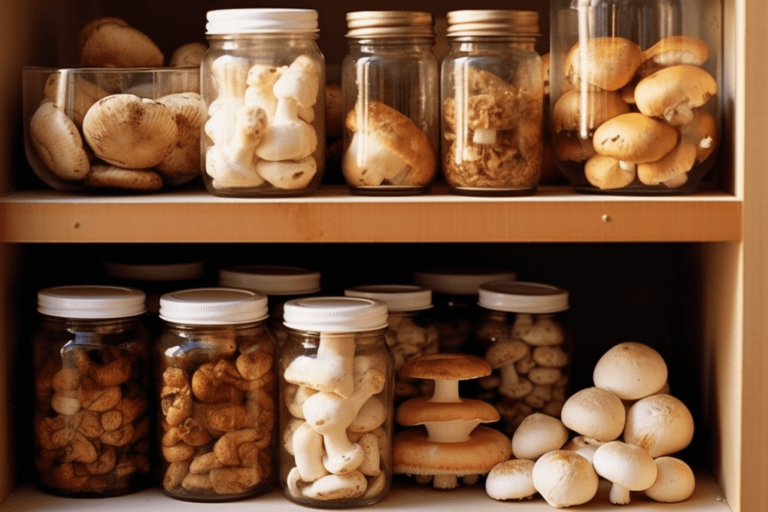
When stored correctly, magic mushrooms retain both their strength and safety. Fresh mushrooms usually remain consumable for roughly a week, but dried mushrooms can preserve their efficacy for as long as 12 months.
Fresh vs. Dried Shrooms
Typically, fresh mushrooms remain good for 5 to 10 days in the fridge before they start to spoil. If properly dried and stored in an airtight container away from moisture, mushrooms can have a shelf life of up to one year.
Proper Storage Techniques
To ensure the longevity and preservation of their psychoactive effects, dried mushrooms should be kept in a cool, dark environment. This practice maintains the quality over an extended period.
For optimal potency retention and mold prevention, it is advisable to store mushrooms within moisture-resistant vessels such as vacuum sealed bags paired with desiccants. These measures are critical in sustaining dryness and prolonging shelf life.
Risks and Safety Concerns
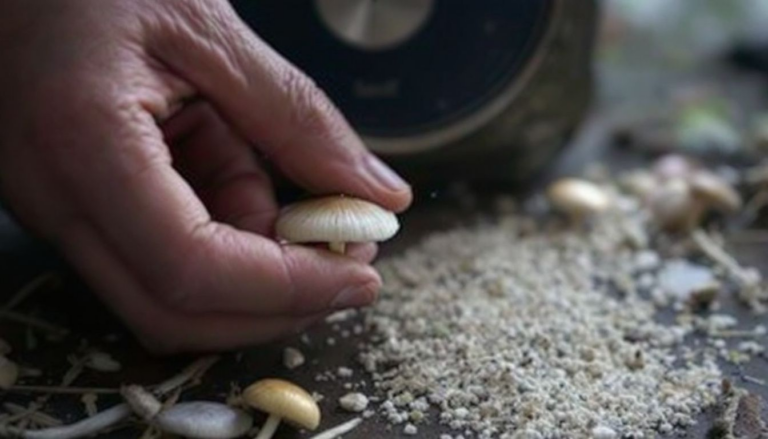
It’s essential to be aware of the safety concerns and risks linked to magic mushrooms in order to ensure a secure experience. While overdosing on these mushrooms usually causes symptoms that are not life-threatening, it can trigger severe psychological responses.
Physical Symptoms
During a shroom trip, individuals often encounter physical reactions such as headaches, nausea, dizziness, and diarrhea. An increased heart rate is also typical. High doses may lead to more serious consequences like seizures or even unconsciousness.
Vomiting can occur for some people as a bodily response while on a shroom trip. Being aware of these potential symptoms and responding properly is critical for maintaining safety.
Psychological Effects
During a shroom trip, individuals may experience heightened feelings of suspicion and bewilderment. The psychological effects induced by psilocybin mushrooms are diverse and can significantly differ from one person to another. It is typical for users to undergo intense emotional responses ranging from profound happiness to severe terror.
The varying psychological impacts underscore the necessity of being in a secure and nurturing setting when taking mushrooms, which helps in coping with any adverse experiences that might arise.
Interactions with Other Substances
Utilizing magic mushrooms in conjunction with other drugs can result in unforeseeable and potentially dangerous outcomes. For example, mixing psilocybin—found in these mushrooms—with stimulant drugs may cause heart rate and blood pressure to rise to hazardous levels. When taking mushrooms alongside other substances, it’s critical to exercise caution because of the possibility for erratic interactions.
It is also important to be cautious with everyday substances such as alcohol that can hinder the body’s metabolism of psilocybin. Being aware of how these different agents interact is key for individuals looking to avoid dangerous mixtures and guarantee a more secure experience with magic mushrooms.
Managing a Bad Trip
Taking large quantities of magic mushrooms may lead to intense and potentially distressing experiences, commonly known as a ‘bad trip’ or simply a mushroom trip. To mitigate the severity of such an adverse experience, it is beneficial to be in a comfortable setting and have adequate preparation beforehand.
Tips for Calming Down
Engaging in controlled deep breathing exercises can help reduce anxiety during a difficult episode. Gently reminding the person that they are under the influence of a substance and that what they’re feeling will pass can offer comfort and aid in restoring their calm.
The presence of a reliable companion can be comforting and assist in stabilizing someone who is going through a bad trip. Remaining within an environment that is safe and known to them also plays an important role in mitigating distress.
When to Seek Medical Help
When experiencing symptoms like extended disorientation or intense paranoia while tripping, it’s crucial to seek professional medical assessment. If an individual is at risk of harming themselves or others, it’s imperative to contact emergency services immediately.
Should someone exhibit severe restlessness or struggle with communication, obtaining emergency help may be necessary.
Can You Overdose on Magic Mushrooms?
Understanding the risk of overdosing on psilocybin mushrooms and its consequences can contribute to their safer consumption. When one ingests too much, they may experience a range of serious effects both mentally and physically, which include profound hallucinations, intense psychological distress as well as symptoms such as vomiting and an increased heart rate.
Psychological Overdose Effects
Consuming an excessive amount of magic mushrooms may result in significant psychological effects. The usual reactions to a substantial dosage include:
intense anxiety
fear-induced panic attacks
heightened paranoia
vivid and frightening hallucinations
Typically, these symptoms endure from 6 to 8 hours. Some aftereffects might remain for days.
This highlights the critical nature of being aware of the proper dosages and ensuring that one is in a secure and managed setting. Adequate preparation and having supportive measures in place can help reduce the potential dangers associated with consuming high doses of mushrooms.
Physiological Overdose Risk
Although instances of physiological overdose on psilocybin are infrequent and deaths directly resulting from it are exceedingly rare, there remains a potential for significant health complications in severe situations.
It is crucial to be aware of the physiological health risks associated with psilocybin, despite their scarcity, to ensure its use is approached responsibly.
Therapeutic Potential of Psilocybin
Current studies and clinical trials are investigating the healing capabilities of psilocybin for a range of mental health conditions, exhibiting potential in reducing symptoms associated with depression, anxiety, and PTSD.
Mental Health Improvements
The FDA has acknowledged psilocybin’s capacity to alleviate symptoms of treatment-resistant depression and anxiety by granting it a ‘breakthrough therapy’ status for major depressive disorder. This endorsement underscores its efficacy in managing such conditions.
Ongoing studies are exploring the impact of psilocybin on PTSD as well as how it functions when paired with established therapeutic techniques. These encouraging findings underscore the substance’s potential significance in treating mental health issues.
Ongoing Research
Current studies persist in revealing the therapeutic possibilities of psilocybin, indicating that it could cause considerable enhancements in mental health issues, especially for those dealing with depression and PTSD.
Such accumulating evidence points to a promising role for psychedelic mushrooms within the realm of mental health treatment.
Summary
Understanding the temporal progression and impact of magic mushrooms is crucial for a beneficial and secure journey. Each phase, from the onset to peak to overall persistence, presents distinct revelations as well as challenges during a shroom trip. The duration that mushrooms remain active in one’s system can be affected by numerous elements such as dosage size, ingestion method, and personal metabolic rate. Employing proper preservation techniques can ensure the enduring efficacy and safety of magic mushrooms.
Being informed about potential dangers related to magic mushrooms use is vital. It assists individuals in confidently steering through psychedelic episodes with knowledge on handling an adverse experience. Although overdoses are uncommon events, using these substances responsibly remains paramount importance Research into psilocybin showcases its promising capabilities for addressing various psychological conditions Exploration could yield novel therapeutic applications.
Frequently Asked Questions
How long do the effects of shrooms last?
The effects of mushrooms generally last between 4 to 6 hours, although some individuals may experience lingering effects for up to eight hours or more.
This duration can vary based on the dose and individual differences.
Can you detect psilocybin in a standard drug test?
Typically designed to identify more common substances, standard drug tests do not detect psilocybin. Specialized and usually rare and expensive testing for psilocybin is available.
What are the common physical symptoms during a shroom trip?
Common physical symptoms during a shroom trip include nausea, headaches, dizziness, and an elevated heart rate.
In severe cases, individuals may experience seizures or loss of consciousness.
What should I do if I experience a bad trip?
If you experience a bad trip, it is crucial to engage in deep breathing exercises, stay with a trusted friend, and remain in a safe and familiar environment to help calm yourself.
These strategies can significantly aid in regaining control and alleviating distress.
Is it possible to overdose on magic mushrooms?
Yes, it is possible to overdose on magic mushrooms, leading to intense hallucinations and severe psychological distress, even though physiological overdose is rare.
Therefore, caution is advised when consuming them.
Dr. Mitchell G. Cohen is a board-certified Internal Medicine specialist with over 34 years of experience in patient-centered healthcare. A graduate of Hahnemann University School of Medicine, Dr. Cohen completed his internship at the University Health Center of Pittsburgh, where he gained invaluable hands-on experience. He is also a certified addiction specialist, holding membership with the American Society of Addiction Medicine (ASAM).
Currently based in Nashua, NH, Dr. Cohen is affiliated with Saint Joseph Hospital, where he provides comprehensive care focusing on both internal medicine and addiction treatment. His expertise includes prevention, diagnosis, and management of adult diseases, as well as specialized care for individuals facing substance use disorders.
Dr. Cohen is committed to fostering open communication, ensuring his patients are fully informed and empowered to make confident decisions about their health and treatment options.

MD Mitchell Grant Cohen
Dr. Mitchell G. Cohen is a board-certified Internal Medicine specialist with over 34 years of experience in patient-centered healthcare. A graduate of Hahnemann University School of Medicine, Dr. Cohen completed his internship at the University Health Center of Pittsburgh, where he gained invaluable hands-on experience. He is also a certified addiction specialist, holding membership with the American Society of Addiction Medicine (ASAM).
Currently based in Nashua, NH, Dr. Cohen is affiliated with Saint Joseph Hospital, where he provides comprehensive care focusing on both internal medicine and addiction treatment. His expertise includes prevention, diagnosis, and management of adult diseases, as well as specialized care for individuals facing substance use disorders.
Dr. Cohen is committed to fostering open communication, ensuring his patients are fully informed and empowered to make confident decisions about their health and treatment options.
